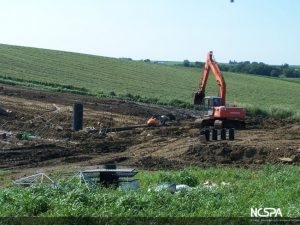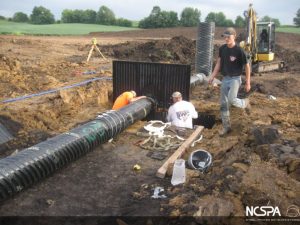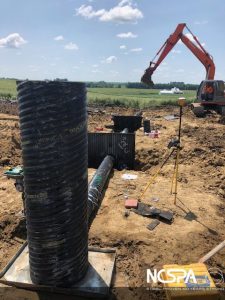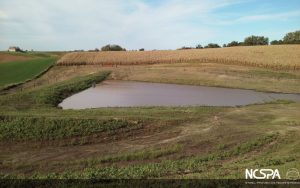By: Metal Culverts, Inc

In the heart of America’s agricultural lands, numerous rivers, streams, and watersheds have been negatively impacted with excess nutrient runoff and soil erosion. This “runoff”, primarily from intensive agricultural practices, has caused the listing of numerous rivers onto America’s most endangered and polluted waterways. One such river on the list of threatened waterways is the Iowa River. From a watershed perspective, the Iowa River watershed consists of many sub basins (which the Middle Cedar is classified as) that ultimately flow into the Upper Mississippi River basin. The severe levels of contamination in these waters affect many communities who may depend on clean water from these sources. The impacts from these contaminated waterways can be felt all the way through the watersheds and ultimately enter into the Gulf of Mexico- contributing to the gulf’s ever increasing “dead zone”.

In an effort to combat this increasing waterway pollution, the Middle Cedar Watershed Management Authority (MCWMA) was created in response to a $97 million dollar grant awarded to the state of Iowa through the US Department of Housing Urban Development. The MCWMA consists of various cities, counties, and soil and water conservation districts within the 10 county 1.5 million acre Middle Cedar Watershed located in East Central Iowa. Land use in the Middle Cedar watershed is primarily ag based, with 73% of the land designated for some sort of agricultural production. Members of the MCWMA work together to serve as a platform for planning, education, research, strategic initiatives, funding, projects, and policy formation to address watershed issues. Projects designated in the MCWMA would focus on water quality and quantity issues and would be addressed through any of four general measures.
1.) Riparian Management
2.) Control of Water below Fields-Impoundments such as wetlands and retention basins
3.) Control of Water within Fields-Controlled drainage, grass waterways,
4.) Building of Soil Health- Reduced tillage, crop rotations, and cover crops

In June of 2019, Metal Culverts Inc was able to provide assistance on several projects within the Middle Cedar Watershed directly relating to control of water below fields and control of water within fields. Focusing on these two areas, water quality would be noticeably improved throughout the Middle Cedar watershed and beyond. In this particular phase of projects, Metal Culverts worked with WHKS Engineering on the design of the structures and various contractors on the installations. Metal Culverts Inc provided numerous polymer coated CSP water control structures for water retention/pond projects within the WMA. Retention ponds would collect runoff from surrounding fields and provide a controlled rate of discharge during higher volume rain events and give time for contaminates to settle and be contained during normal conditions. Pools above the risers would also provide habitat for area wildlife. The riser structures varied in size from 24”-36” in diameter, both 12 and 14 gauge, and were from 3’ -14’ tall. Polymer CSP outlet pipes ranged from 12”-24” in diameter, 12 and 14 gauge, and run lengths from 82’-140’. Joints on the outlet pipes were designed using rod and lug type bands with an application of a mastic type material to ensure a water tight joint. To aid in stopping water migration down pipe outlets, full diaphrams were fabricated and installed using polymer coated sheet material. Nathan Anderson, design engineer with WHKS assigned to the projects, had not previously worked with polymer coated CSP products, but did have a very vague knowledge of different coating options available with CSP. Through the NCSPA’s Corrugated Steel Pipe Design Manual, the NCSPA website, and Metal Culvert’s website, Nathan was able to review available data and gain the knowledge necessary for him to confidently select polymer coated CSP products for the water control structures. The ability for polymer CSP to be fabricated and customized to meet specific site conditions and hydraulic requirements along with the ability to provide a necessary 100 year service life for the projects made choosing polymer CSP an easy decision over alternate products. Justin Schrader of Schrader Tiling and Terrain who installed the structures was very pleased with the ease of installation. As a company who has installed many plastic and pvc structures in the past, their first installations of polymer CSP on these projects went well and they were thoroughly impressed with the product. Upon review of the projects completion, Nathan and other project stakeholders are extremely happy with the outcome and are planning on specifying polymer CSP products in future water control projects.

